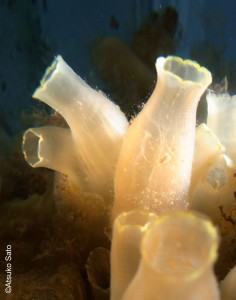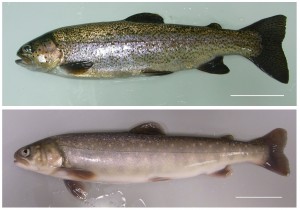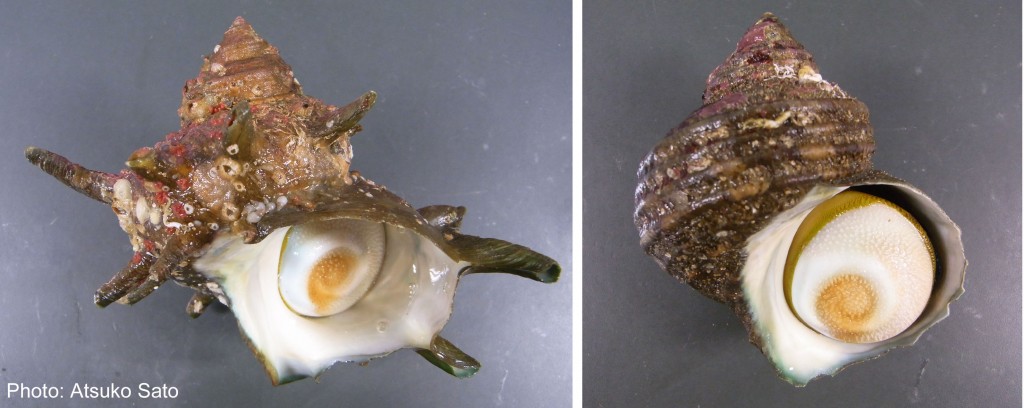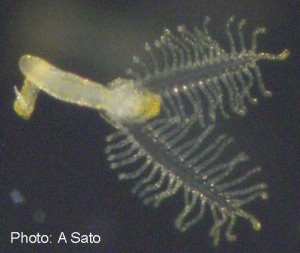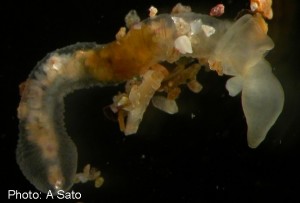Our goal: Predicting future morphological changes in a changing environment
My central interest is to understand law of change in organisms to predict the future of the animal kingdom. In the last century-plus, evolutionary biology has provided our understanding of organisms on Earth, with most of the studies focusing on differences of between organisms in the light of their past. However I wonder whether we could extract a law of morphological change in the evolutionary time-scale, so as to better understand the future. To this end, we need to understand at least three aspects of life: the origin of and changes in variation, laws of inheritance, and uniqueness in the pattern in organisms.
Mendel’s law of inheritance was an initial break-through in predicting future changes in organisms. As William Bateson correctly predicted over a century ago, that the law of inheritance provided a ‘common ground’ to various fields of biology, such as agriculture, natural history, evolutionary biology and medicine. On the other hand, these studies revealed a number of cases that cannot be explained by Mendelian inheritance, for example environment-gene interaction such as phenocopy and penetrance, gene-gene interaction in the form of epistasis, parental effects, and transgenerational epigenetic inheritance.
My group focuses on understanding developmental buffering and its impact on the future generations in the face of environmental challenge using natural population of organisms. Our study and previous studies showed that developmental buffering is maternally inherited in various organisms, such as ascidians, sea urchins and fish. Based on this discovery, we tackled three major questions: [1] What is the molecular basis of buffering, [2] how the level of buffering can be modified, and [3] how it will impact on future generations in the face of fluctuating environment? Also, using an extraordinary example of phenotypic plasticity in the horned turban snail Turbo sazae, we aim to produce a multi-scale mathematical model that connects molecular events in a cell, alteration of tissues and a morphological phenotype.
1. Mechanisms of maternal effect in developmental buffering
Developmental buffering, originally proposed by Conrad Hal Waddington more than half a century ago, is a key to understanding how organisms change during the evolutionary process. Previous studies suggested various molecular as well as network aspects of developmental buffering. Most famous examples are studies on Hsp90, heat shock protein, and theoretical studies in gene network. We have been investigating the molecular basis of developmental buffering using sister species of the ascidian genus Ciona. These two species lives in different temperature regimes. By heat shock experiments, we found a tremendous difference in the level of developmental buffering under temperature perturbations between the two speices (Sato et al. 2015; Fig. 1). Using cross-hybridization of these sister species, and comparative transcriptomic studies, we discovered the importance of endoplasmic reticulum-associated chaperones in developmental buffering (Sato et al. 2015) instead of Hsp90. ER associated chaperones had not been a subject of studied in developmental biology by then. Since ER chaperons are involved in both protein folding as well as in degradation pathway, we proposed that both protein folding and degradation are important in developmental robustness (Sato 2018). We also tested this hypothesis by RNAi screening in C. elegans (Hughes et al. 2019; Fig. 3). The idea has now been supported in various other developmental models such as in segmentation clock.
We have also been investigating network characteristics of developmental buffering. First, we tested how the developmental gene network is linked to developmental buffering, since how the spatiotemporarily dynamic process of development is stabilized by developmental buffering has been a matter of debate. A difficulty of studying Ciona is, despite the fact that they are chordates, finding gene ontology with the human gene model is impossible in approximately 20% of all gene. In addition, there is no protein-protein interaction network has been identified. We exploited weighted gene correlation network analysis (Horvath and Dong, 2008) to make sense of such transcriptomes. The analysis confirmed several important characteristics of buffering that have been previously shown experimentally in yeast and worms, for example being composing of genes with high connectivity, suggesting that the analysis correctly predicted the buffering network. By calculating similarity of gene expression between buffering genes and developmental genes, and comparing them with the similarity between buffering genes, our analysis revealed that developmental gene networks are loosely linked to developmental buffering. Yet the link contains signaling molecules that are key in developmental patterning, we propose that stabilization of signaling molecule is the key in developmental buffering (Sato et al. 2022).
- Fig. 1
- Fig. 2
- Fig. 3
2. Origin of, and transgenerational changes in variation in the face of thermal challenge
Whilst developmental buffering stabilize development thereby maintains species, morphological change requires reduced level of buffering. What alters the level of buffering and how does it affect variation? I hypothesized that a key mechanisms is the influence of maternal environment on the level of buffering in the offspring (Sato 2018). To address this, we investigated transgenerational impact of thermal stress on variation in maternal mRNAs in eggs by thermal challenge of the mother during her development. We found that the variability of maternal mRNAs decreased in the F1 generation but our data showed a possibility of increase in variability in the following generation (Sato et al. 2024). We are currently working on epigenomic impact of thermal stress in the evolution of chordate body plan using epigenomic sequencing and mathematical modeling of gene expression changes.
3. Mathematical modelling of phetnotypic plasticity in the horned turban snail Turbo sazae.
Phenotypic plasticity is the phenomenon of organisms showing different phenotypes depending on the conditions. Traditionally phenotypic plasticity is considered as a cause of morphological change in the evolutionary process, yet this has been open to debate. We aim to predict the pattern of organismal change by creating a multi-scale mathematical model that connects molecular-level change in a cell and structural change at the tissue level to morphological change using a fascinating example of phenotypic plasticity in the horned turban. T. sazae is a gastropod species that lives in Japan and South-East Asia. Within the single species, there are individuals with large horns or no horns (Fig. 4). A single individual may even switch between horned and non-horned during its lifespan. Previous ecological studies suggested that wave strength is a switch for the presence and absence of horns. Using mathematical modeling and machine learning, we found that spine phenotypes can be described by different mathematical models by assuming molecular reactions that underlying spine formation (Moulton et al. 2024).
4.Biology of pterobranch hemichordates
Hemichordates are important organisms when we address questions of our origins and the evolutionary process. Amongst the two groups of hemichordates, acorn worms (Fig. 5) have advanced our knowledge in developmental biology of hemichordates, whereas our biological knowledge of pterobranchs (Fig. 6) is still poor. Using a population of pterobranchs from SW England, which can be collected relatively easily from shallow water, we conduct developmental, ecological and evo-devo studies on the origin of vertebrates and the evolutionary process.
- Fig 5
- Fig 6
